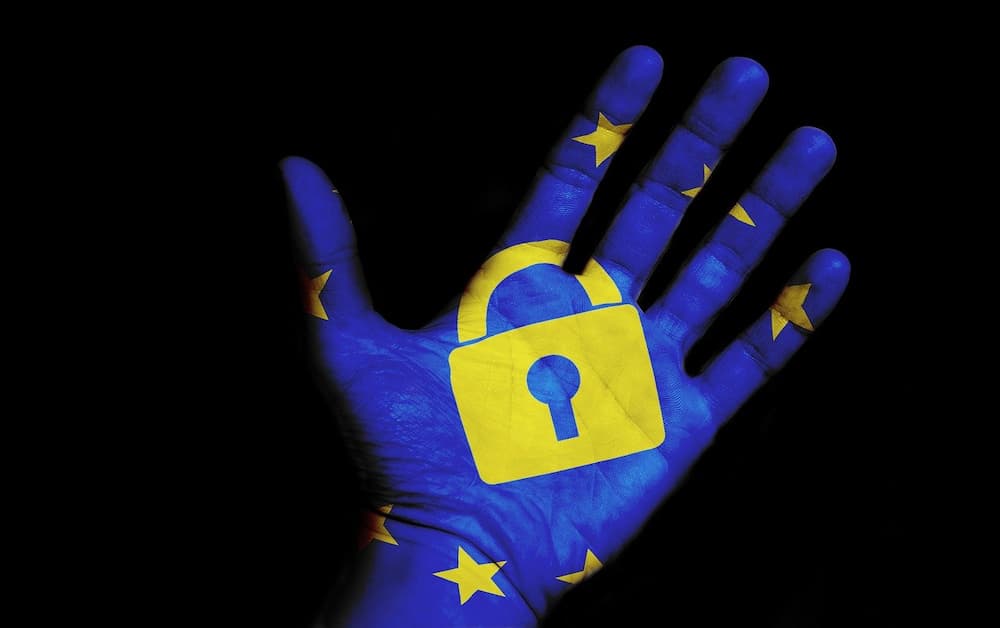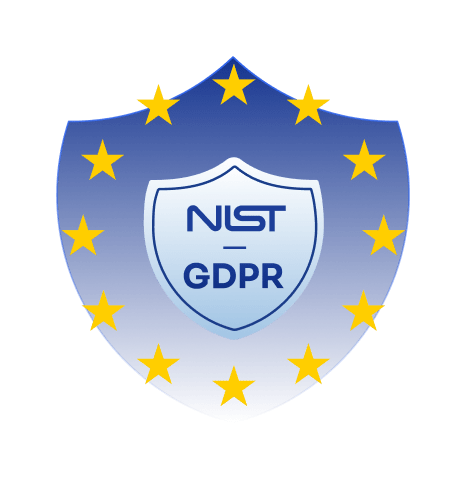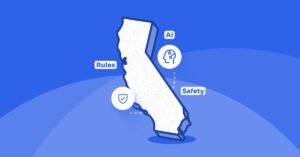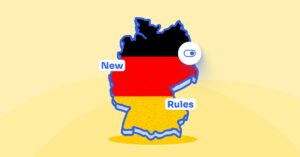Introduction
The landscape of cybersecurity and data protection is ever-evolving, with organizations facing increasingly sophisticated threats and stringent regulatory requirements. The rise of cybersecurity threats, particularly those that are evolving, such as supply chain risks, underscores the importance of integrating the National Institute of Standards and Technology (NIST) Cybersecurity Framework (CSF) 2.0 and the General Data Protection Regulation (GDPR) as they provide a structured approach to managing and reducing cybersecurity risk, including guidance for addressing evolving cybersecurity threats and supply chain risks. In this context, integrating the NIST CSF 2.0 and GDPR is crucial for enhancing cybersecurity posture and ensuring compliance with data protection laws.
Initially focused on improving critical infrastructure cybersecurity, the NIST CSF has evolved to address a broader range of cybersecurity challenges, reflecting cybersecurity practices and user feedback changes. Integrating cybersecurity into an organization’s larger enterprise risk management strategy ensures that its cybersecurity risk management strategy, expectations, and policy are established, communicated, and monitored, focusing on supply chain risk management and evolving expectations about using third-party vendors.
Key updates in NIST Cybersecurity Framework 2.0
NIST CSF 2.0 builds upon its predecessor by incorporating feedback from stakeholders and addressing emerging cybersecurity challenges. Initially focused on critical infrastructure cybersecurity, the framework has evolved to address a broader range of cybersecurity challenges, making it adaptable for businesses and organizations of all sizes. Key updates include enhanced guidance on supply chain risk management, improvements in threat identification and response, increased focus on privacy considerations, and adding a new governance function.
This new govern function encompasses areas such as roles, duties, and authority; policy; oversight of cybersecurity strategy; understanding of organizational context, cybersecurity strategy, and cybersecurity supply chain risk management, focusing on corporate governance responsibilities and supply chain risks. Additionally, including privacy considerations as part of the enhancements in NIST CSF 2.0 underscores its significance in cybersecurity and data protection.
NIST CSF 2.0 as a risk management framework
NIST CSF 2.0 serves as a comprehensive risk management framework, aiding organizations in managing cybersecurity risk by providing a systematic methodology to identify, protect, detect, respond to, and recover from cybersecurity risks. Organizations can prioritize cybersecurity investments and improve their cybersecurity posture by aligning cybersecurity efforts with business objectives.
The framework plays a crucial role in managing cybersecurity risks, facilitating a structured approach to cybersecurity risk management that simplifies compliance efforts and offers tailored guidance for addressing the unique challenges and mitigating risks associated with digital landscapes, particularly in the context of educational institutions.

The 6 components of the framework core
The NIST Cybersecurity Framework (CSF) is a set of guidelines developed by the National Institute of Standards and Technology (NIST) to provide organizations with a structured approach to managing their cybersecurity risks. The Framework Core consists of six components: Functions, Categories, Subcategories, Informative References, Implementation Tiers, and Profiles. Functions are the key cybersecurity activities an organization must undertake, and they are divided into five core functions: Identify, Protect, Detect, Respond, and Recover. These functions serve as the CSF’s foundational elements and help organizations identify, protect, detect, respond to, and recover from cybersecurity threats.
Categories and Subcategories provide specific cybersecurity outcomes that an organization should aim to achieve. Categories are groups of cybersecurity outcomes related to each other, while Subcategories provide a more granular level of detail on the specific outcomes. Informative References offer guidance on achieving desired outcomes and provide organizations with resources and best practices to help them improve their cybersecurity posture.
Implementation Tiers assess an organization’s cybersecurity maturity by evaluating its processes and practices against the Framework Core. There are four tiers, each representing a different level of cybersecurity maturity. Profiles allow organizations to tailor the Framework to their specific needs by selecting the Functions, Categories, and Subcategories that are most relevant to them. Profiles help organizations to prioritize their cybersecurity efforts and allocate resources more effectively.
NIST CSF 2.0 changes and updates
NIST CSF 2.0 introduces significant changes and updates aimed at enhancing cybersecurity risk management and improving the framework’s usability:
Expansion of scope: The framework now has a broader focus, accommodating various organizational needs and levels of cybersecurity maturity.
Introduction of a new function: NIST CSF 2.0 incorporates a new function called “Govern,” emphasizing the importance of cybersecurity governance. This addition enhances clarity and provides organizations with a structured approach to managing cybersecurity risks.
Restructuring for clarity: The framework has been restructured to improve clarity and usability, making it easier for organizations to understand and implement cybersecurity best practices.
Broader application: NIST CSF 2.0 has a broader application, extending beyond traditional cybersecurity concerns to encompass privacy considerations and supply chain risk management.
Enhanced guidance: The framework provides enhanced guidance on managing cybersecurity supply chain risks, reflecting the growing importance of supply chain security in mitigating cyber threats.
Improved functionality: NIST CSF 2.0 offers improved functionality and reference tools, facilitating organizations in customizing the framework to their specific cybersecurity needs and objectives.

What is GDPR?
The General Data Protection Regulation (GDPR) is a comprehensive data protection law enacted by the European Union (EU) in May 2018. Its main objective is to protect individuals’ privacy rights by regulating the processing of their personal data. The GDPR applies to all organizations that handle the personal data of EU residents, regardless of where the organization is based. Under the GDPR, individuals have the right to know what data is being collected about them, how it is being used, and who it is being shared with. Organizations must obtain explicit consent from individuals before collecting or processing their personal data. They must also implement appropriate security measures to protect the data and report any data breaches to the relevant authorities.
The GDPR has also introduced the concept of the “right to be forgotten”, which allows individuals to request that their personal data be deleted from an organization’s records. Organizations must comply with these requests unless there are legal or other compelling reasons not to do so. Overall, the GDPR represents a significant step forward in protecting individuals’ privacy rights and ensuring that organizations are held accountable for handling personal data responsibly and transparently.
A comparison between NIST Cybersecurity Framework (CSF) and GDPR
The National Institute of Standards and Technology Cybersecurity Framework (NIST CSF) is a widely recognized framework focusing on cybersecurity risk management. It provides a flexible and customizable set of guidelines for organizations to enhance their cybersecurity posture. On the other hand, the General Data Protection Regulation (GDPR) primarily concerns data protection and privacy, specifically addressing data privacy concerns. The GDPR is critical in safeguarding personal data and ensuring organizations adhere to strict data protection requirements.
Although NIST CSF and GDPR have different primary focuses, they share common objectives, such as protecting sensitive data, mitigating cybersecurity risks, and ensuring compliance with regulatory requirements. Additionally, both frameworks underline the importance of adopting a comprehensive approach to security and privacy, which is essential to address complex cybersecurity challenges.
Organizations can develop robust cybersecurity and data protection strategies by leveraging the synergies between NIST CSF and GDPR. For instance, they can use NIST CSF to identify cybersecurity risks and implement controls to mitigate them while using GDPR to ensure compliance with data protection requirements and safeguard personal data. A combined approach based on NIST CSF and GDPR can help organizations enhance their cybersecurity posture, mitigate risks, and protect sensitive data.

Advancements in technology
Cybersecurity has been greatly impacted by technological developments in recent years, particularly with the advent of AI-powered threat detection and cloud computing. Integrating AI into cybersecurity practices has enabled organizations to identify and respond to cyber threats in real-time, significantly reducing the time between identifying and mitigating potential attacks. On the other hand, cloud computing has provided organizations with greater flexibility and scalability in managing cybersecurity resources, allowing them to allocate resources as needed and respond to incidents more effectively.
Despite these advancements, emerging technologies such as AI and cloud computing also pose cybersecurity risks that must be addressed. For example, data privacy concerns are a growing challenge in today’s digital landscape, and organizations must ensure that sensitive information is kept secure and confidential. Additionally, the increasing use of cloud-based platforms raises concerns about security vulnerabilities as cybercriminals continue to exploit weaknesses in these systems. As such, organizations must remain vigilant to safeguard their digital assets and stay ahead of the evolving cybersecurity threat landscape.
Conclusion
Organizations can enhance their cybersecurity posture and ensure compliance with regulatory requirements by integrating the National Institute of Standards and Technology’s (NIST) Cybersecurity Framework (CSF) 2.0 with the General Data Protection Regulation (GDPR). This integration provides guidelines, best practices, and standards to help organizations manage and reduce cybersecurity risks.
Organizations should conduct a comprehensive risk assessment to achieve this integration and map their cybersecurity risks to the NIST CSF’s five core functions. They should then implement relevant NIST CSF controls and guidelines to mitigate these risks. Additionally, organizations can leverage technological advancements, such as artificial intelligence (AI) and machine learning (ML), to enhance their cybersecurity posture and improve incident response times. In conclusion, integrating NIST’s CSF 2.0 and GDPR is essential for organizations to protect sensitive data and safeguard against evolving cyber threats.




